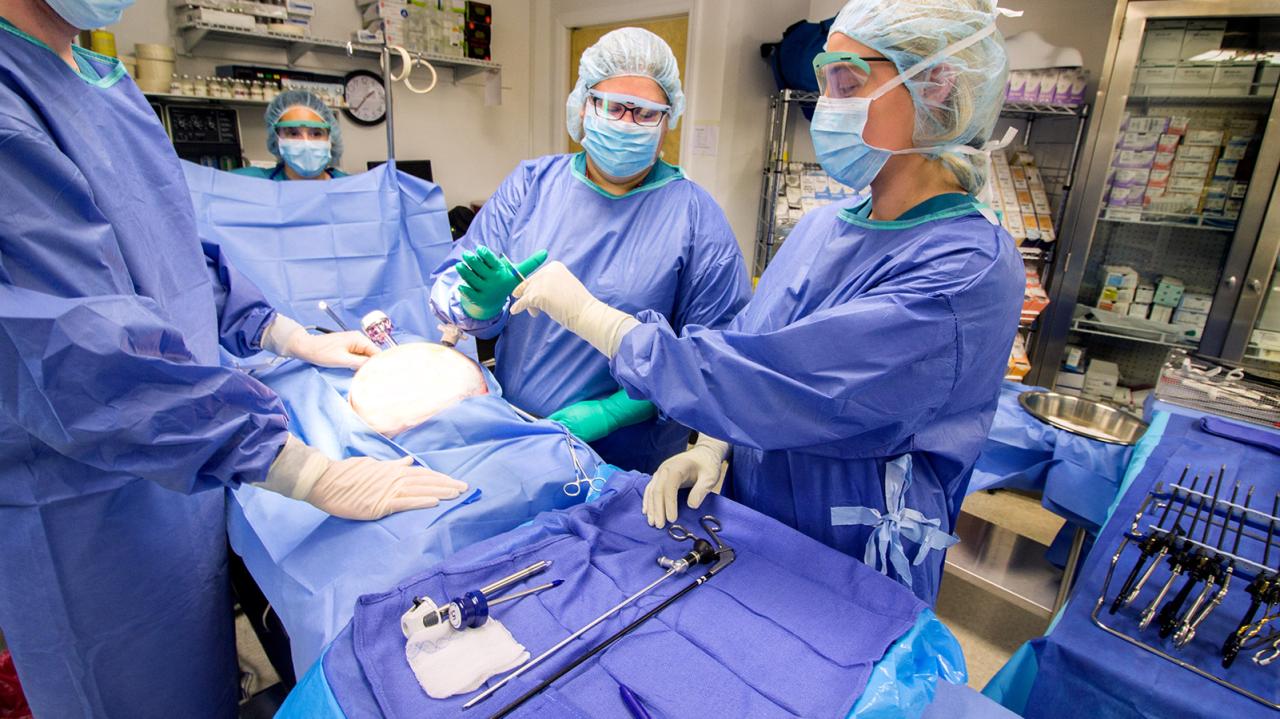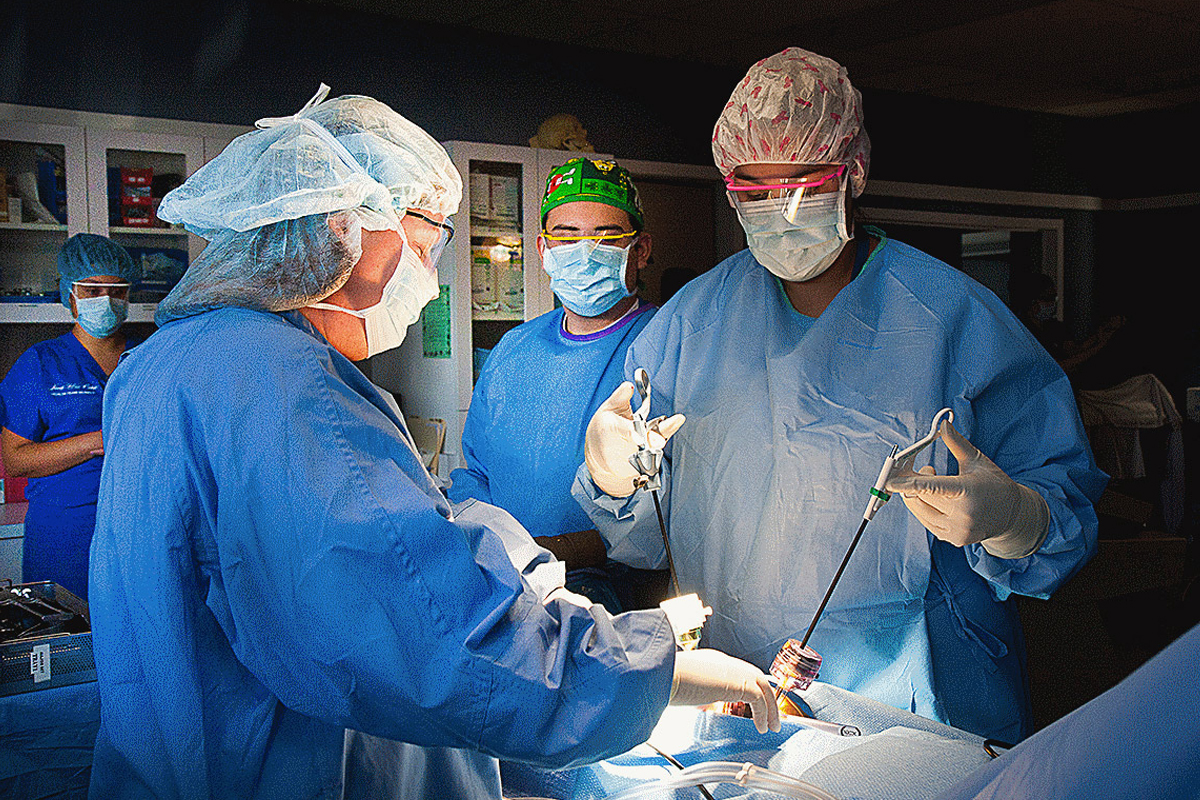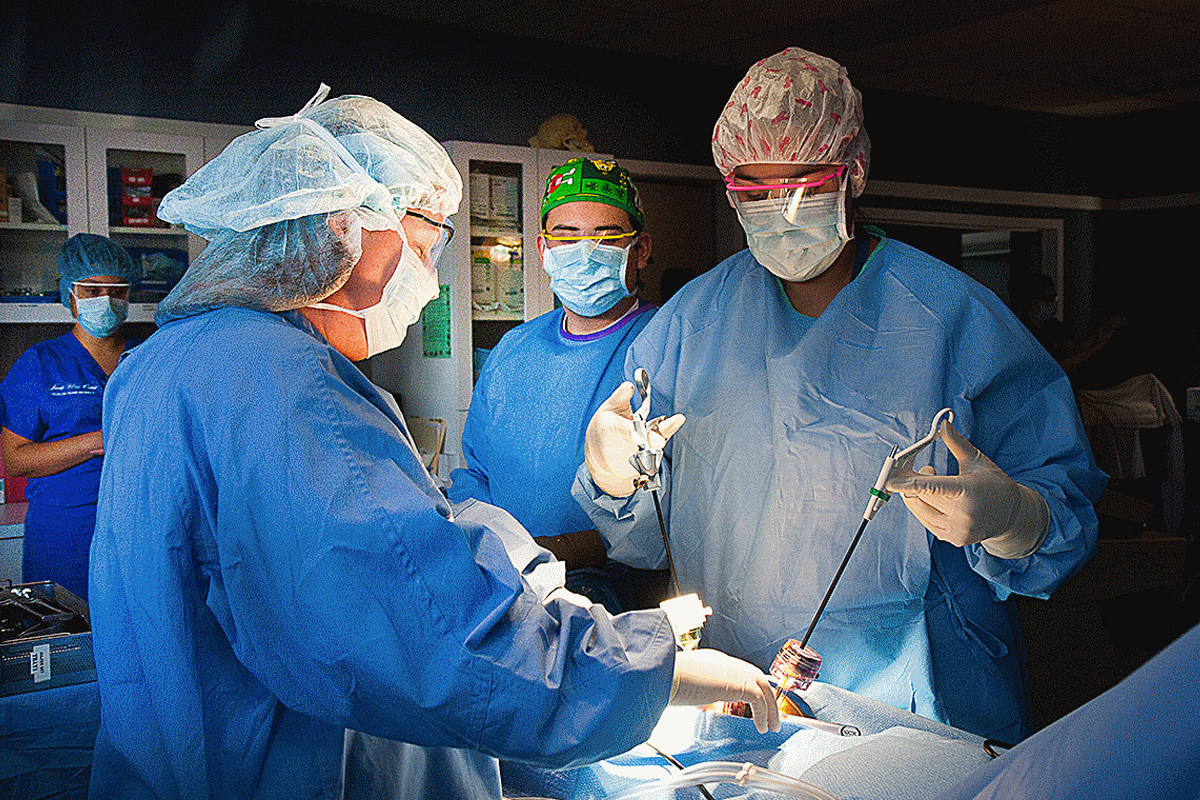Accredited surgical tech programs near me with clinical rotations offer a fantastic pathway to a rewarding career. Finding the right program requires careful consideration of factors like location, curriculum, clinical experience, and cost. This guide helps you navigate the process, comparing programs to find the perfect fit for your goals and aspirations. We’ll explore program specifics, including curriculum details, admission requirements, financial aid options, and even what a typical day in a clinical rotation might look like.
We’ll delve into the crucial role of clinical rotations, comparing the experiences offered by different programs and highlighting the surgical specialties covered. Understanding the accreditation process and licensing requirements is also key, and we’ll break that down for you. Ultimately, this guide aims to empower you to make an informed decision about your future in surgical technology.
Finding Accredited Surgical Tech Programs
Locating an accredited surgical technology program requires careful research. This involves identifying programs within a reasonable geographic radius, comparing their offerings, and understanding their accreditation status. The following sections detail how to conduct this research effectively.
Accredited Programs Within a 50-Mile Radius
To find accredited surgical tech programs near you, utilize online search engines, professional organizations like the Association of Surgical Technologists (AST), and state licensing boards. The following table lists example programs – remember to replace these with actual programs in your area. Always verify accreditation status directly with the program or the accrediting body.
Finding accredited surgical tech programs near you that include crucial clinical rotations is a great first step. But let’s be real, tuition can be a hurdle, so check out resources for surgical tech programs near me with financial aid options to make it more manageable. Once you’ve sorted funding, focus your search back on programs offering those hands-on clinical rotations—they’re key to your success!
| Program Name | Location | Website | Contact |
|---|---|---|---|
| Example Program 1 | Anytown, USA | www.exampleprogram1.com | (555) 123-4567 |
| Example Program 2 | Neighborville, USA | www.exampleprogram2.com | (555) 987-6543 |
| Example Program 3 | Springfield, USA | www.exampleprogram3.com | (555) 555-5555 |
Clinical Rotation Details

Clinical rotations are a crucial component of surgical technology education, providing hands-on experience in a real surgical setting. The quality and breadth of these rotations vary between programs. A thorough comparison is essential for choosing the right program.
Clinical Rotation Requirements and Comparisons
Each program will have specific requirements for clinical rotations, including the number of hours, the types of surgical specialties covered, and the affiliated hospitals or surgical centers. Below is a comparison of three example programs. Remember to replace this with data from actual programs.
| Program Name | Rotation Requirements | Surgical Specialties Covered |
|---|---|---|
| Example Program 1 | 700 hours, minimum 6 months | General Surgery, Cardiovascular, Orthopedics |
| Example Program 2 | 800 hours, minimum 8 months, includes elective rotation | General Surgery, Neurosurgery, Urology, Gynecology |
| Example Program 3 | 600 hours, minimum 6 months, flexible scheduling | General Surgery, Orthopedics, Ophthalmology |
Program Curriculum Comparison
The curriculum of surgical technology programs can differ in terms of course content, duration, and teaching methodologies. A detailed comparison helps prospective students identify programs that align with their learning styles and career goals.
Curriculum Comparison Table

This table provides a comparison of three example programs’ curricula. Replace this information with data from actual programs.
| Program Name | Course Content | Duration | Teaching Methodologies |
|---|---|---|---|
| Example Program 1 | Anatomy & Physiology, Surgical Procedures, Sterile Techniques | 12 months | Lectures, Labs, Clinical Rotations |
| Example Program 2 | Anatomy & Physiology, Surgical Procedures, Sterile Techniques, Advanced Surgical Instruments | 18 months | Lectures, Labs, Clinical Rotations, Simulations |
| Example Program 3 | Anatomy & Physiology, Surgical Procedures, Sterile Techniques, Medical Terminology | 12 months | Lectures, Hands-on Workshops, Clinical Rotations |
Essential Skills Taught
Surgical technology programs focus on developing a range of essential skills. These skills are crucial for success in the field.
- Sterile techniques and surgical asepsis
- Surgical instrument identification and handling
- Patient preparation and positioning
- Surgical draping and gowning
- Effective communication and teamwork
Admission Requirements and Costs

Understanding admission requirements and the associated costs is crucial for planning your surgical technology education. Each program has specific prerequisites and financial considerations.
Admission Requirements and Financial Information
The following table Artikels example admission requirements and costs. Remember to replace this information with data from actual programs.
| Program Name | Admission Requirements | Tuition Fees | Financial Aid Options |
|---|---|---|---|
| Example Program 1 | High school diploma or equivalent, entrance exam | $15,000 | Federal student loans, grants |
| Example Program 2 | High school diploma or equivalent, background check | $18,000 | Federal student loans, scholarships, institutional aid |
| Example Program 3 | High school diploma or equivalent, CPR certification | $12,000 | Federal student loans |
Student Experiences and Reviews
Student reviews provide valuable insights into the strengths and weaknesses of different surgical technology programs. They can highlight the quality of clinical rotations, teaching, and overall program experience.
Summary of Student Reviews
Here’s a summary of hypothetical student reviews for two example programs. Replace this with actual student reviews and feedback.
Example Program 1: Students generally praise the program’s strong clinical rotations, providing ample hands-on experience in various surgical specialties. However, some students mention a lack of individual attention from instructors.
Example Program 2: Students appreciate the program’s comprehensive curriculum and supportive instructors. Some feedback indicates that the clinical rotation placements could be improved in terms of variety and access to different surgical procedures.
Career Prospects After Graduation: Accredited Surgical Tech Programs Near Me With Clinical Rotations
Graduates of accredited surgical technology programs have promising career prospects. Understanding job placement rates and average salaries helps in making informed career decisions.
Career Paths and Statistics
Graduates typically find employment in hospitals, surgical centers, and outpatient clinics. Job placement rates vary depending on the program and the overall job market. Average starting salaries are also subject to geographic location and experience. (Note: These are example statistics and should be replaced with actual data from reliable sources.) Example: A hypothetical national average starting salary might be $50,000-$60,000 per year, with higher salaries in certain regions or specialties.
Career advancement opportunities include specialization in specific surgical areas and leadership roles within surgical teams.
So you’re looking to become a surgical tech? Awesome! Finding the right program is key, and that means making sure it’s accredited and includes hands-on experience. Check out this resource to find accredited surgical tech programs near me with clinical rotations to get a head start on your career. Clinical rotations are super important – they’ll give you the real-world skills you need to succeed in this exciting field.
Good luck with your search for accredited surgical tech programs near me with clinical rotations!
Program Accreditation and Licensing
Accreditation and licensing are essential aspects of surgical technology programs. Understanding these processes is vital for ensuring your credentials are recognized and valid.
Finding accredited surgical tech programs near you with clinical rotations is key to a successful career. To help you practice your presentations, check out the best AI voice generator for realistic human voices to simulate patient interactions and refine your communication skills. This will make you a more confident and prepared surgical tech once you’re in the operating room.
Accreditation and Licensing Information, Accredited surgical tech programs near me with clinical rotations
Accreditation ensures that a program meets specific educational standards. Licensing is required to practice as a surgical technologist. (Note: This section requires specific information regarding accrediting bodies and licensing requirements in your state or region. This information should be obtained from the relevant state licensing board and professional organizations.) The process of obtaining necessary certifications and licenses usually involves passing a national certification exam and meeting any state-specific requirements.
Illustrative Example of a Clinical Rotation
A typical day in a surgical technologist’s clinical rotation involves a range of responsibilities and tasks, requiring both technical skills and effective communication.
A Day in a Clinical Rotation
A surgical technologist’s day might begin with preparing the operating room, ensuring all necessary instruments and supplies are sterilized and readily available. This includes checking equipment functionality and setting up the sterile field. During a surgical procedure, the technologist works closely with the surgical team, assisting with patient positioning, draping, and instrument handling. After the procedure, the technologist helps in cleaning and sterilizing the instruments and equipment, maintaining a sterile environment.
Throughout the day, clear communication and teamwork are essential for the smooth and efficient execution of surgical procedures. For example, during an appendectomy, the technologist would meticulously prepare the instruments, anticipate the surgeon’s needs, and maintain sterility throughout the procedure, working collaboratively with the surgical team to ensure a successful outcome. The ability to quickly and accurately anticipate the surgeon’s needs is paramount, requiring not only technical skill but also strong communication and teamwork.
Wrap-Up
Choosing the right accredited surgical tech program is a significant step towards a successful career. By carefully weighing factors like program accreditation, clinical rotation opportunities, curriculum, and cost, you can confidently select a program that aligns with your personal and professional objectives. Remember to thoroughly research each program, consider student reviews, and don’t hesitate to reach out to program representatives with any questions.
Your future in surgical technology awaits!
FAQs
What is the average salary for a surgical technologist?
Average salaries vary by location and experience but generally range from $45,000 to $65,000 annually.
How long does a surgical tech program typically take to complete?
Most programs take around 1-2 years to complete.
Are there scholarships or grants available for surgical tech programs?
Yes, many financial aid options exist, including federal grants, scholarships, and institutional aid. Check with individual programs for details.
What is the job outlook for surgical technologists?
The job outlook is generally positive, with a projected growth in demand for surgical technologists.
